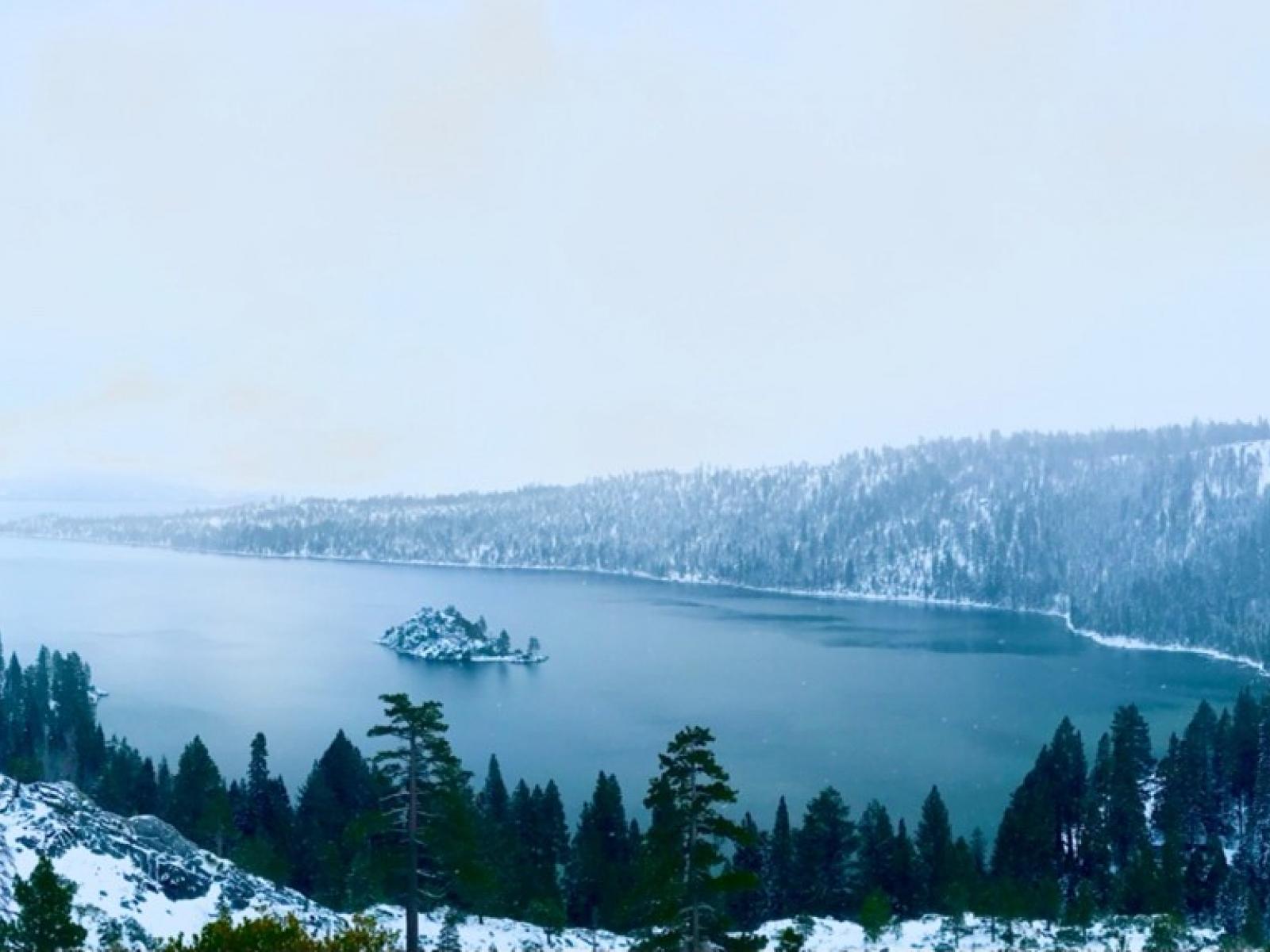Regional Hydroclimate Changes Shape Spatial Pattern of Future Lake Evaporation Increases
The overlooked impact of regional hydroclimate changes on lake evaporation implies more robust regional lake volume changes

Lakes hold ~87% of Earth’s surface liquid freshwater and provide critical resources to support ecosystems and human society. One of the most concerning changes to lakes under a warming climate is enhanced lake evaporation.
(Photograph by Wenyu Zhou | Pacific Northwest National Laboratory)
The Science
Lake evaporation is projected to globally increase in a warmer climate, but the degree of the increase varies substantially between regions. Understanding the spatial pattern of lake evaporation increase is important for projecting regional lake changes. By combining an ensemble of climate and lake model projections with a novel attribution framework, scientists revealed that regional hydroclimate changes shape the spatial pattern of future lake evaporation increase. The resulting spatial coupling between regional hydroclimate change and lake evaporation increase indicates robust regional changes in the lake water budget. This allows researchers to qualitatively project regional lake volume changes.
The Impact
Lakes are critical natural resources vulnerable to climate change. Previous studies overlooked the role of regional hydroclimate change in shaping the spatial pattern of future lake evaporation. Linking lake evaporation changes to regional hydroclimate change has important implications for projecting future lake volume changes, as regional hydroclimate changes simultaneously affect water inflow into lakes. Understanding the role of regional hydroclimate in coupling lake evaporation and water inflow changes reduces uncertainty in projecting changes in lake volume, a critical freshwater resource for humans and ecosystems.
Summary
Lake evaporation is projected to globally increase as the climate warms, but with substantial variation between regions. Scientists applied a novel attribution method (a reformulated Penman equation) to ensemble climate and lake projections. They then showed that future lake evaporation increase is strongly modulated by regional hydroclimate change. Specifically, a drying hydroclimate will amplify evaporation increase by enlarging the surface vapor pressure deficit, the moisture difference between the saturated surface and the near-surface air, and reducing the cloud reflection of solar radiation. Future lake evaporation increase is amplified in regions with drier future hydroclimates (e.g., tropical America, the Mediterranean, and Southeast China) but dampened in regions with wetter future hydroclimates (e.g., high latitudes and the Tibetan Plateau). As regional climate change simultaneously affects the water inflow into lakes and lake evaporation, regional changes in lake water balance are more robust than previously thought and can be qualitatively predicted.
PNNL Contact
L. Ruby Leung, Pacific Northwest National Laboratory, Ruby.Leung@pnnl.gov
Funding
This research was supported by the Department of Energy, Office of Science, Biological and Environmental Research as part of the Regional and Global Model Analysis program area.
Published: February 11, 2022
Zhou, W., Wang, L., Li, D., and R. L. Leung. “Spatial pattern of lake evaporation increases under global warming linked to regional hydroclimate change.” Communications Earth & Environment, 2, 255 (2021). [DOI: 10.1038/s43247-021-00327-z]